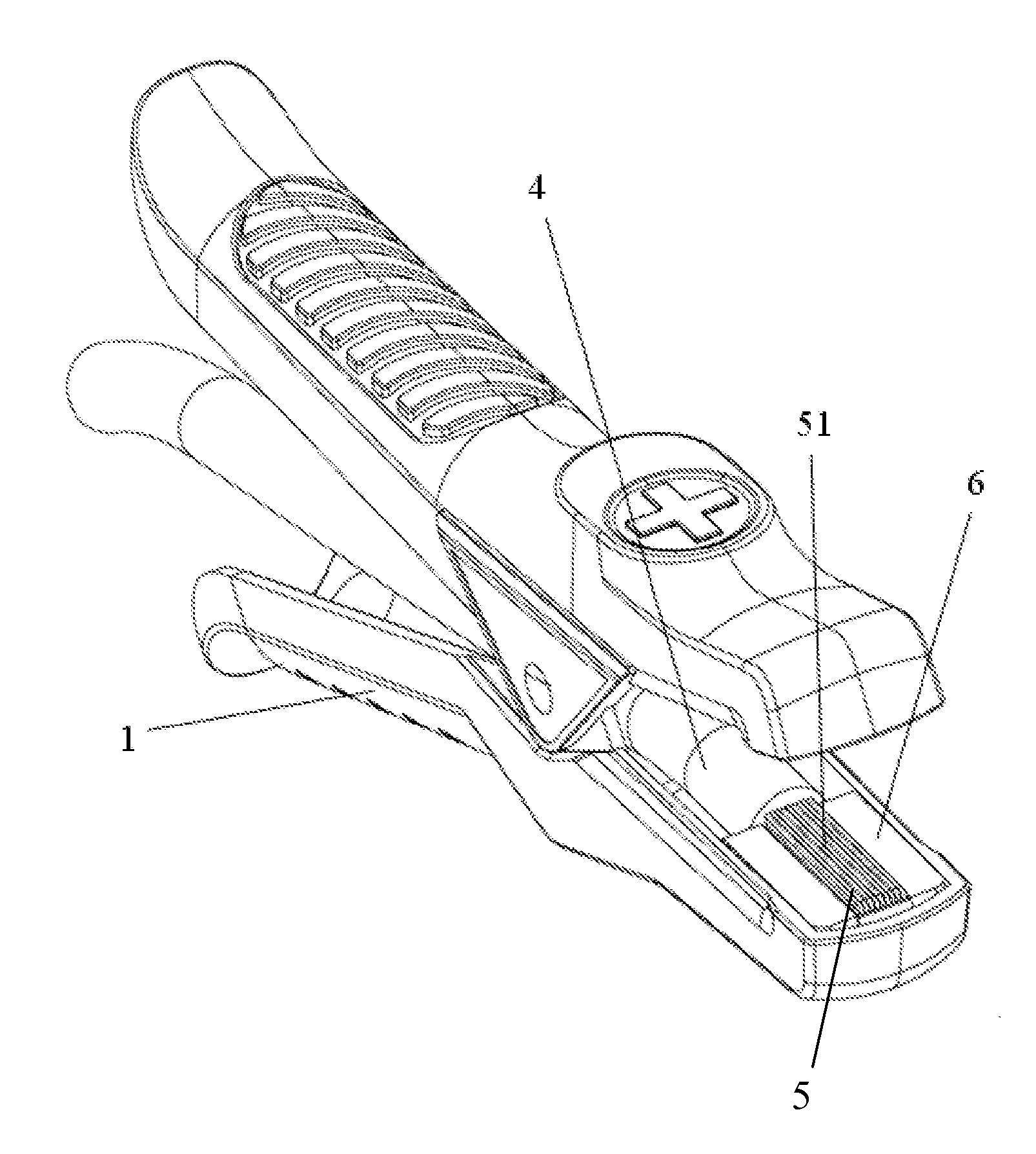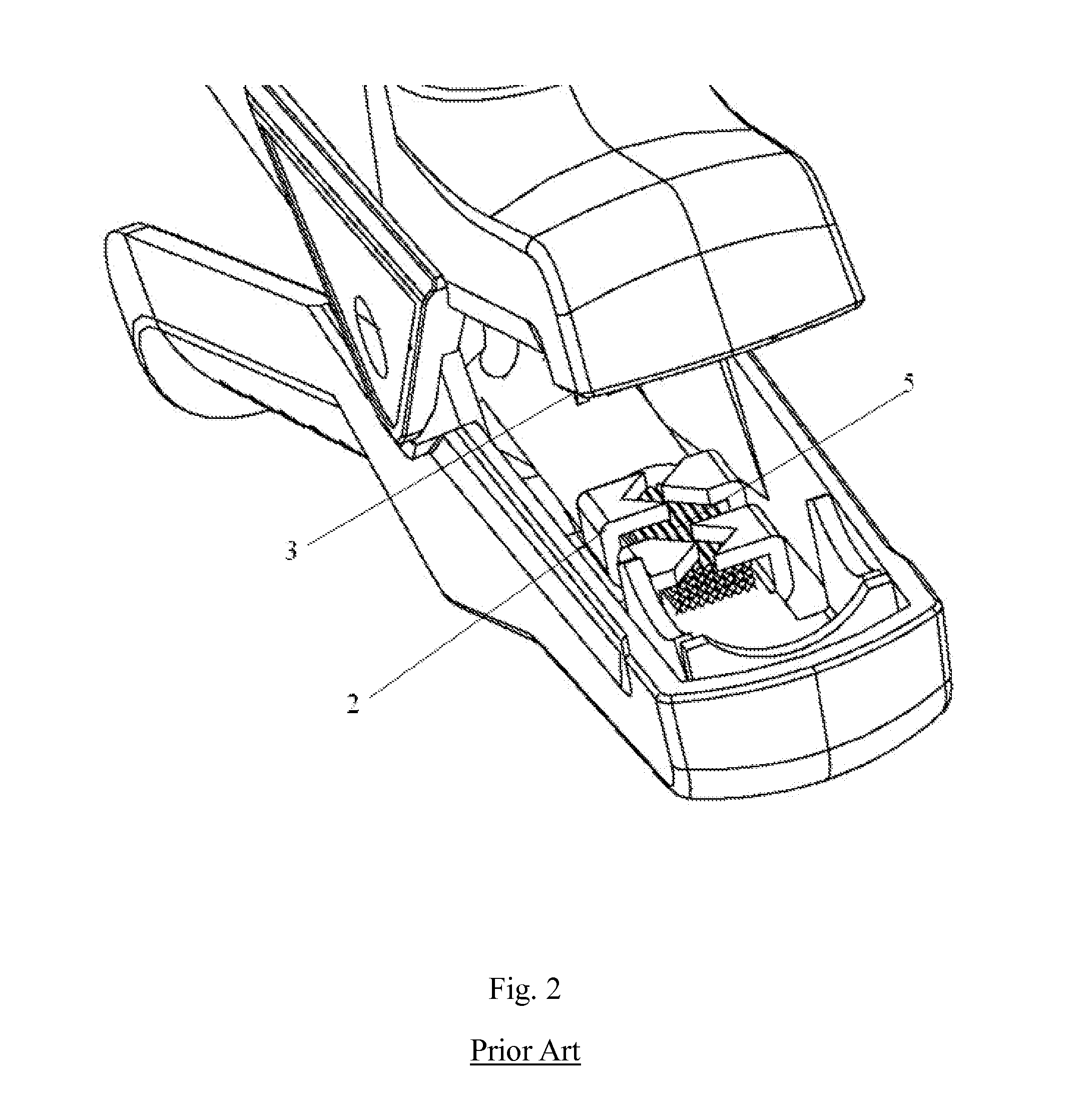High conductivity energy-saving clamping device
a clamping device and high conductivity technology, applied in the direction of coupling device connection, electrical apparatus, connection, etc., can solve the problems of increased raw material loss, poor electric conduction, serious pollution of the environment during the manufacture, etc., and achieve the effect of improving conductivity and high conductivity energy saving
- Summary
- Abstract
- Description
- Claims
- Application Information
AI Technical Summary
Benefits of technology
Problems solved by technology
Method used
Image
Examples
embodiment 1
[0038]As shown in FIG. 3 and FIG. 4, conductive material 5 (usually copper or other metal wires) is plainly set on one part of the juncture at the mouth of clamp 1, and the front end of conductive material 5 is fixed between the mouth of clamp 1 and the insulation plate 6 (in this embodiment, insulation plate 6 is made of plastics). Conductive surface 51 is formed on the surface of the insulation plate 6. When connecting with clamp 1, we open it to expose the conductive surface 51. As clamp 1 connects an external conductor (a wiring terminal for instance), conductive surface 51 directly contacts the wiring terminal to effect electric conduction. Due to the effective increase in contact area, the conductivity performance of the clamping device in this invention is 10% to 15% higher than that of common clamps with known technology.
[0039]To better effect the Embodiment 1, we can place metallic members (not shown in the figures) to cover conductive surface 51 such that the members (usua...
embodiment 2
[0042]According to different forms of the external conductor, as shown in FIGS. 6 and 7, conductive material 5 goes through a through hole of the insulation plate 6 and extends from the top of the insulation plate 6 to form cluster-like conductive material 52. When using clamp 1 to connect, we open the head of clamp 1 to entirely expose the cluster-like conductive material 52. When clamp 1 connects an external conductor, such as a wiring terminal, cluster-like conductive material 52 contacts the wiring terminal, and electric conduction is achieved. Due to effectively increased contact area, the conductivity performance of the clamping device of this invention is 10% to 15% higher than that of common clamps of known technology.
[0043]As shown in FIG. 8, if conductive material 5 from the cable 4 is divided into two parts, and the two parts vertically extend from the two parts of the juncture at the mouth of clamp 1 respectively, two cluster-like conductive material 52 are thus formed t...
embodiment 3
[0044]According to the different forms of external conductor required by the clamp, as shown in FIG. 9, conductive material 5 from the cable 4 is divided into two parts. One part plainly set on one part of the juncture at the mouth of clamp 1 forms the conductive surface 51 and another part vertically extending from another part of the juncture at the mouth of clamp 1 forms cluster-like conductive material 52. When connecting with clamp 1, we open it to expose conductive surface 51 and cluster-like conductive material 52. As clamp 1 connects the external conductor (a wiring terminal for instance), conductive surface 51 and cluster-like conductive material 52 directly contact the wiring terminal to conduct electricity. Due to the effective increase in contact area, the conductivity performance of the clamping device in this invention is 10% to 15% higher than that of common clamps with known technology.
[0045]From the above mentioned embodiments, the invention has the following advant...
PUM
 Login to View More
Login to View More Abstract
Description
Claims
Application Information
 Login to View More
Login to View More - R&D
- Intellectual Property
- Life Sciences
- Materials
- Tech Scout
- Unparalleled Data Quality
- Higher Quality Content
- 60% Fewer Hallucinations
Browse by: Latest US Patents, China's latest patents, Technical Efficacy Thesaurus, Application Domain, Technology Topic, Popular Technical Reports.
© 2025 PatSnap. All rights reserved.Legal|Privacy policy|Modern Slavery Act Transparency Statement|Sitemap|About US| Contact US: help@patsnap.com



